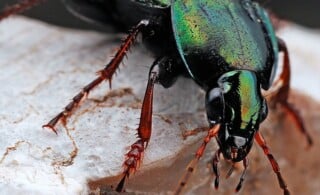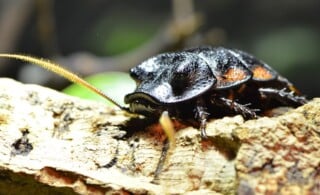
Ant control is a common pest control problem across the country. While there are many different types of ants that find their way into our homes, including pavement ants, carpenter ants, odorous house ants, thief ants, fire ants, and pharaoh ants, just to name a few, for the most part the strategies for dealing with them are all the same.
Get Them Where It Counts
Far and away the biggest mistake homeowners make when facing ant infestation is to kill the ones they can see as quickly as possible and hope they’ve solved the problem. Whether you’re using an insecticide spray or your shoe, however, you’re missing the boat if this is your preferred course of action. While it may seem like there’s a lot of ants marching across your kitchen floor, it’s important to keep in mind that there’s anywhere from several hundred to several thousand more in a nest nearby. And that includes at least one egg-laying queen who is doing her best to increase those numbers by the day. Spraying the ten or twenty making their way to the pantry might make you feel productive, but what you really need to do is find a way to get rid of that nest.
A Solution to the Problem: Ant Baits
Perhaps the best solution for indoor ant control is to set out ant baits throughout your home. Ants are drawn to the “food” inside the baits (which is really poison) and then will take it back to the nest to share it with others. It’s really the only way to attack the nest where your problem is originating. When laying your bait try to do so next to scent trails (invisible trails that ants follow to get to a specific place. It’s why they all walk together in such perfect lines). You’ll get more traffic by doing so and the ants in house will come across the bait faster. Also, never spray ants that are gathering around the bait. Remember, the goal is that they take the poison back to the next. Don’t kill them before they get the chance. Finally, be sure to place bait traps out of reach of pets and children, since they are toxic and harmful if played with or swallowed.
Ready to start your Ant Problem?
Find ProsOutdoors
Some ant control issues aren’t solved indoors. There are ants that next outdoors and travel in to find food and water. And there are some, such as fire ants, that generally stay outdoors, but present a nuisance or danger for homeowners. In the case of these types of ants, find the nest or anthill, then douse it with a liquid insecticide. Don’t skimp here. There more you apply and the deeper the treatment penetrates into the mound, the better your results will be. To prevent outdoor ants from becoming ants in house, you can also apply an insecticide/repellent around the outside edge of your home. Spray a 2-3 foot strip of insecticide at the base of your home, as well as a 2-3 foot strip on the ground around it. This should help repel ants looking for a way inside.
Final Thoughts
Remember, most outdoor ants are actually very beneficial to your yard and plants. They clean up plant debris, dead bugs, and often help control other insect pests. Don’t eradicate them unless you’ve got good reason to. Finally, keep in mind that certain species of ants, including carpenter and odorous ants, can be a very difficult ant problem to eradicate (and in the case of carpenter ants, can result in structural damage if your extermination isn’t successful). If you’ve got a persistent ant problem that won’t go away, it’s probably a good idea to bring in a pest control professional. They have access to ant control techniques and products that aren’t available to the general public. The cost of exterminators can far outweigh the cost of damage to your home and yard that can be caused by trying to solve a persistent pest problem on your own.
 A Homeowner’s Guide to Entomology and House Insects
A Homeowner’s Guide to Entomology and House Insects  Roach Control the Natural Way
Roach Control the Natural Way  Getting Rid of Raccoons: Problems and Solutions
Getting Rid of Raccoons: Problems and Solutions  Flea Control & Prevention
Flea Control & Prevention  An Eco-Friendly Yard: How to Keep Bugs, Weeds, and Other Nuisances Out Without Harming the Planet
An Eco-Friendly Yard: How to Keep Bugs, Weeds, and Other Nuisances Out Without Harming the Planet 

Are You Familiar With This Topic? Share Your Experience.